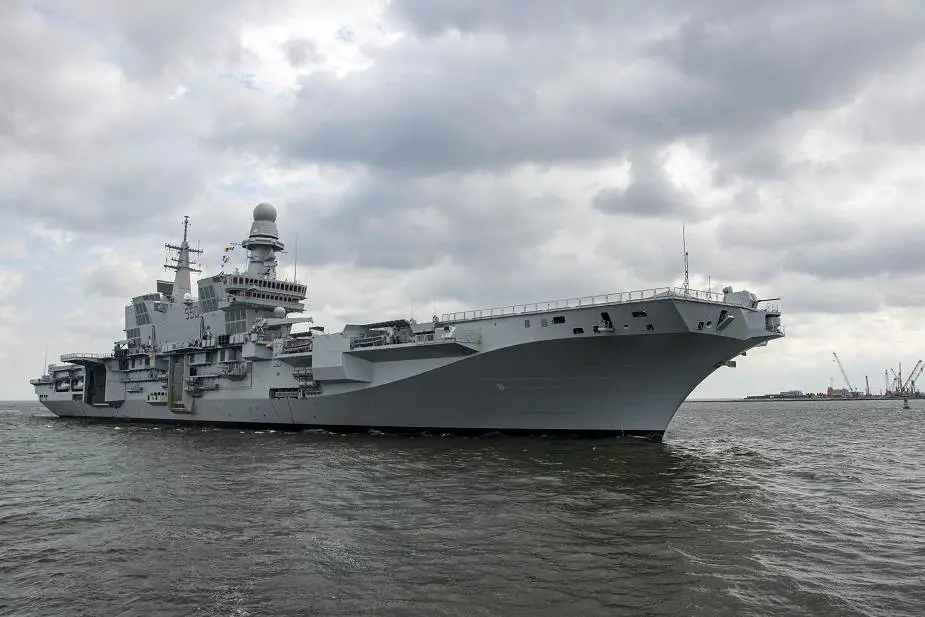Breaking news
Italian Navy aircraft carrier Cavour with F-35B fighter fully qualified to conduct operational deployment.
According to information published by the NATO website on May 13, 2021, the Italian aircraft carrier Cavour has returned to Taranto at the Mar Grande naval station in Italy after three months of operations with the U.S. military in the Atlantic Ocean. The recently upgraded Italian Navy flagship, the aircraft carrier Cavour (CVH 550) participated in sea trials, a series of tests and functional activities, following which the F-35 Joint Program Office has delivered a flight clearance recommendation to the Italian Navy for the safe operation of fifth-generation F-35B fighter aircraft.
Follow Navy Recognition on Google News at this link
 The Italian Navy flagship, ITS Cavour CVH 550 aircraft carrier. (Picture source U.S. DoD)
The Italian Navy flagship, ITS Cavour CVH 550 aircraft carrier. (Picture source U.S. DoD)
During the sea trials, two F-35Bs were embarked aboard Cavour and carried out more than 50 flight missions, around 120 vertical landings, 115 short take-offs, and two vertical takeoffs. The Italian Navy Cavour aircraft carrier is now fully qualified to conduct operational deployment with the fifth-generation fighter F-35B.
While operating in the western Atlantic, ITS Cavour collaborated with the Arleigh Burke-class guided-missile destroyer USS Stout (DDG 55). They conducted a three-day interoperability exercise with support from Carrier Air Wing (CVW) 7 and Patrol and Reconnaissance Wing (CPRW) 11. ITS Cavour also conducted dual-carrier operations alongside USS Gerald R. Ford (CVN 78), marking the first time a Gerald R. Ford-class and Italian carrier operated jointly.
For decades, the bond between Europe and North America has made NATO the strongest Alliance in history. Conducting training and exercises alongside Allies and partners increases our collective capacity and capabilities as well as increased interoperability with the U.S. forces. Its Cavour has truly been an ambassador of this trans-Atlantic bond.
Several Allied carrier strike groups, under national command, will be deployed into SACEUR (Supreme Allied Commander Europe) Area of Responsibility (AOR) in the upcoming weeks and months. These multiple deployments demonstrate the Allied commitment to the maritime enterprise as well as our ability to effectively deliver multi-domain effects.
The multinational character of NATO deployment, exercises and activities reflect Allies’ fundamental commitment to the transatlantic bond and to the principle of collective defence in order to keep peace and preserve security. No Ally can face today’s security challenges alone. We are stronger when we stand together.
Interoperability is an essential component of NATO’s DNA and a key component of Allied forces’ readiness and ability to deter aggression. The aircraft carrier represents the highest expression of a nation’s air/sea power and naval diplomacy. The deployment of an aircraft carrier is an enabling factor, because this kind of unit allows rapid redeployment of capabilities, thanks to its peculiar characteristics of operational readiness, enduring logistic self-reliance, high command and control capabilities, and full freedom of movement, thanks to the International Legal Regime of the High Seas (freedom of navigation and inoffensive transit passage through straits) as established by the UNCLOS (United Nations Convention for the Law of the Sea).




























